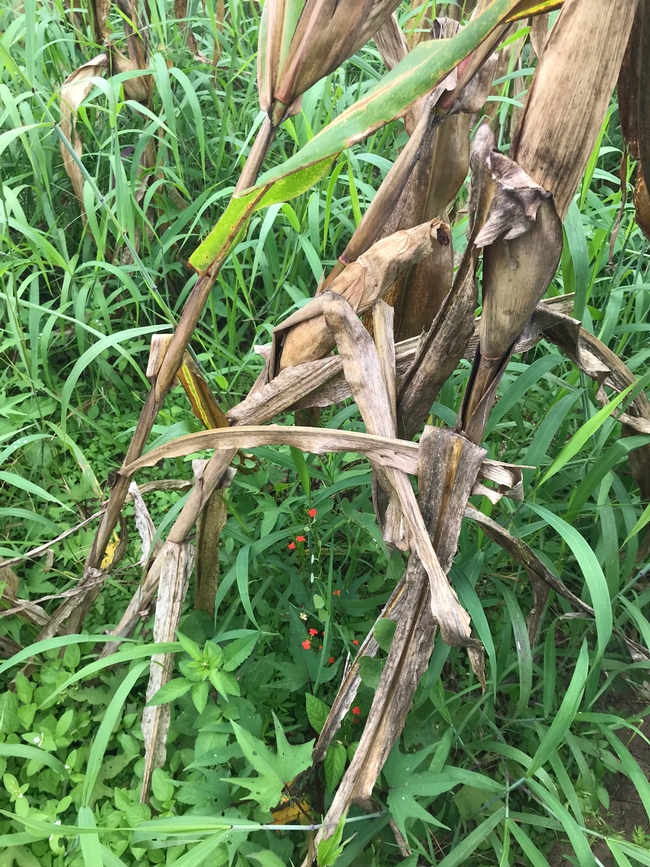In March of this year I traveled to Chimoio, Mozambique to provide an Integrated Pest Management training to a group of farmers through the USAID Farmer-to-Farmer program. On my first day at the farm, we toured the farm and discussed their worst pest issues. One of the farmers brought a red flowering weed to show me, which he said it caused major issues in corn and was very difficult to control.
We continued on our way and it became clear that the biggest pest issue they were facing was the fall armyworm, an invasive species that spread to Mozambique in 2017 and can decimate a corn field. Since chemical inputs aren't always economically feasible for low-input systems like the one I was working in, I was interested learning about other control methods that might be effective. I met someone at dinner one night who had information about a cultural control method involving interplanting legumes in the Desmodiumgenus with the corn, while simultaneously planting Napier grass around the field perimeter. It's called the push-pull method because the fall armyworm is repelled by the interplanted legume, which makes the corn crop less desirable and pushes the fall armyworm out of the corn field. The Napier grass pulls the insects to it, as a more attractive, alternative food source. I learned that this IPM practice was originally developed to control corn stalk borer, but also was effective against witchweed (or striga) because of an allelopathic effect by which certain root exudates from the legume stimulate germination of striga seeds while other exudates interfere with striga development (more information: http://www.push-pull.net/striga_brochure.pdf).
Striga?! My ears immediately perked up as, although I am not a weed scientist by training, I know that this is a parasitic weed that we are trying to keep out of our grain production regions in the United States. In fact, it is on the USDA APHIS quarantine weed list. When I got back to my hotel room I immediately google image searched witchweed and much to my surprise, found it was the red flowering weed that had been presented to me on my first day on the farm. This weed produces minuscule seeds (up to 50,000 per plant) that can stay dormant in the soil for over a decade until another grain crop is planted.
To avoid any risk of bringing striga seeds home, I decided to leave my boots in Mozambique. It's just not worth it and it's upon all of us to do our best to stop the spread of invasive species. When we visit other agricultural areas, we must ask questions to increase our awareness of what the pest issues are, so that we don't spread them back to our regions unknowingly.